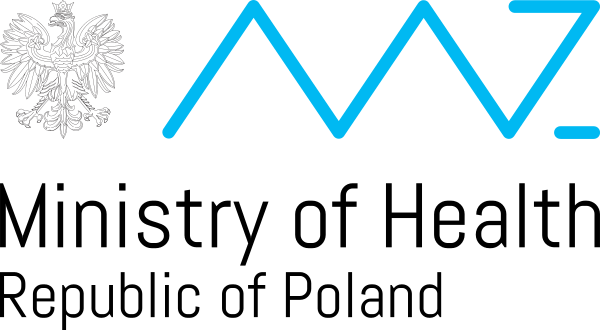When building a software development team together with your software house partner, you may encounter issues that might undermine your relationship. These issues can be mitigated with suitable planning and preparation ahead of, and while, putting together the outsourced team. In this article, we discuss some of the most common outsourcing issues companies face today and our solutions to achieve success with an effective software development team.
How to choose the optimal size and composition of a software development team
At the early stages of a software development project, a client may have only very general tasks in the backlog, tasks that do not clearly indicate how many members will be needed on the project team. The problem is felt more acutely if the company urgently needs to start work. Meanwhile, SCRUM requires that the development team be formulated at the beginning of the project.
Likewise, the early form of the backlog may not clearly indicate the best combination of technical competencies of the team (e.g., frontend, backend, databases/reporting, integration, and so on).
This may result in a number of problems. If a team is too big, there may be a period of time when some team members do not have enough backlog items to work on. In other words, you will be paying for their idle time.
Moreover, the software developers’ competencies may not be evenly, adequately, or properly distributed. For example, there may be too many frontend developers and not enough backend developers. Or the full-stack developers on the team may not have the specific skills to meet what the frontend or backend demands.
An unsuitable team structure, particularly the proportion between programmers and designers, analysts and architects, or a long wait while the backlog is built, can be unnecessarily expensive. Each member of an outsourced team is a cost, even during downtime. Implementing non-critical or less-critical functionalities while other team members are idle would also incur avoidable costs.
What your outsourcing partner should do
- Make sure they understand the nature and specifics of the project in its early stages.
- Consistently review and revise the ideas behind which tools to select and the initial architecture.
- Check and verify the initial backlog of design tasks.
- Whenever and wherever possible, intensify architectural and analytical work in order to better define the project and to better assess completed development process tasks.
- Determine an optimal proportion of design roles and responsibilities, and create a plan for introducing and removing individuals to/from the team as needed.
- Continually develop the competencies of the project team members.
How to avoid making compromises when composing a team
Clients who work with multiple outsourcing partners often face a conundrum when building a team. They define and describe up to three desirable engineer/programmer profiles and receive parallel proposals. The top criteria these companies follow when choosing candidates are the probability that the client will accept the candidate, and of course the size of the profit margin.
Rarely, however, do they have the skills to engage with the client to understand the details and objectives of the project, and thus assess how the optimal team should carry it out. They do not view a development team as an organized whole whose purpose is to undertake a particular project.
Imagine if several different parts suppliers proposed various machine components without knowing or being interested in what machine is to be built with them. Some parts will be redundant, some won’t fit, others will be missing, and still others will be poor quality.
It falls to the client to choose the best, most appropriate components. Unfortunately, the client must make compromises, without any guarantee that the chosen machine parts will work together.
What your outsourcing partner should do
- See the team as a whole that should be greater than the sum of its parts.
- Seek a deep understanding of the technology and the scope of the project.
- Ensure that a team is only set up when the project is well defined.
- When creating hybrid teams, make sure they understand what the client will bring to the team—the people, their roles, their skills, and how long each person will participate.
- When proposing a complete design team, tailor it to the specific needs of the project, given the allotted time and budget. The team structure should be balanced in terms of the distribution of roles and responsibilities, skills, experience, ages and personalities.
How to minimize the time it takes to compose a software development team
Clients often have an important business initiative but expect to build and implement a project team in a relatively short time. What makes this problematic is when some of the individuals chosen to join the project team are direct employees of the client, while others are made available by more than one outsourcing partner. Appointing members to the project team in such conditions can be like solving a jigsaw puzzle, because individual availability is an added dimension to balance along with agreeing on the appropriate skills, roles, and experience of the prospective team members.
And the client wants it all done in a minimal time frame.
The root of the challenge is the market’s high demand for software engineers and IT professionals. Asking outsourcing companies for this type of service only compounds the demand problem. These companies usually have a limited pool of candidates to turn to in order to meet a specific demand, and they undertake the entire recruitment process with their candidates. The client usually also participates in the process, and only hires a chosen specialist after final arrangements.
The specialist is then obliged to resign from his/her current post.
The result is that three to four months often pass from the moment a request is made to the team’s actual start.
What your outsourcing partner should do
- Leverage its personnel potential, i.e., proven, highly qualified IT engineers who have employment history with the company.
- Constantly conduct recruitment for specialists and engineers with typical experience, education, and technical skills, in anticipation of actual client demand for services.
These two factors bring the average time from receiving client requests to the team’s effective start date down to six weeks.
In fact, these requirements mean that when choosing your outsourcing partner, you should be looking for a software house. You can expect that such a software house should have qualified developers on board and be able to conduct the project end-to-end. Additionally, it should plan when each individual stream of project tasks will begin. This greatly helps to stabilize the membership of the team, which is important because changes made after work begins tend to translate into delays and unnecessary added costs.
In case such people are not available at that time, a software house with a brand recognized in the market should be able to recruit talented candidates.
A simple body leasing company, on the other hand, will have to launch the recruitment process to fill software development team roles. As a result, it may take three to four months to start your project.
How to reduce personnel issues within a software development team
When constructing software development teams, clients often do not pay attention to a number of issues and risks that may significantly affect the efficiency of the project team and the time in which it is capable of providing the final product. The most important of these are:
- A person resigns from the team, or unforeseeable circumstances force a long absence.
- A change in business conditions means the team must increase its pace.
- Planned absences and vacations.
- A team member underperforms.
- Last-moment hiring means on-boarding the team member takes place as work begins.
- The work environment is not fully or properly organized (procedures, processes, equipment, tools).
These are, or should be, important details to take note of in the contract.
What your outsourcing partner should do
The following practices can greatly limit the risk that any particular client would face due to the issues above:
- Engage when a team member resigns. Prioritize replacement with another specialist, when possible bringing the new person onto the team before the outgoing member’s departure and facilitating one-to-one knowledge transfer between these team members.
- Periodically, formally inspect team member work efficiency, and leverage project tools to continuously track efficiency. When performance is deemed insufficient, make the required personnel change, minimizing any disruption to the team’s work.
- Engage when a member of a team is faced with a long-term unplanned absence. Leverage the potential personnel of the software house to fill out the team.
- On-board the design team members. Ensure that the team is properly integrated, especially in a hybrid team. Each member, not just the project manager, must know and share the project’s goals, know the appropriate context of the project, its organization, and the client’s environment on their first day. The team’s practices and procedures should be set out for software production and project collaboration.
- Create a unified working environment for team members, providing all of the necessary equipment and licenses, and ensuring their environment is conducive for work.
Wrap-up
Outsourcing really can be a great option to meet your software development needs. Since issues are a realistic risk, make sure you choose an outsourcing partner that will help you plan for and prepare for the issues that you as an outsourcing client might meet.













